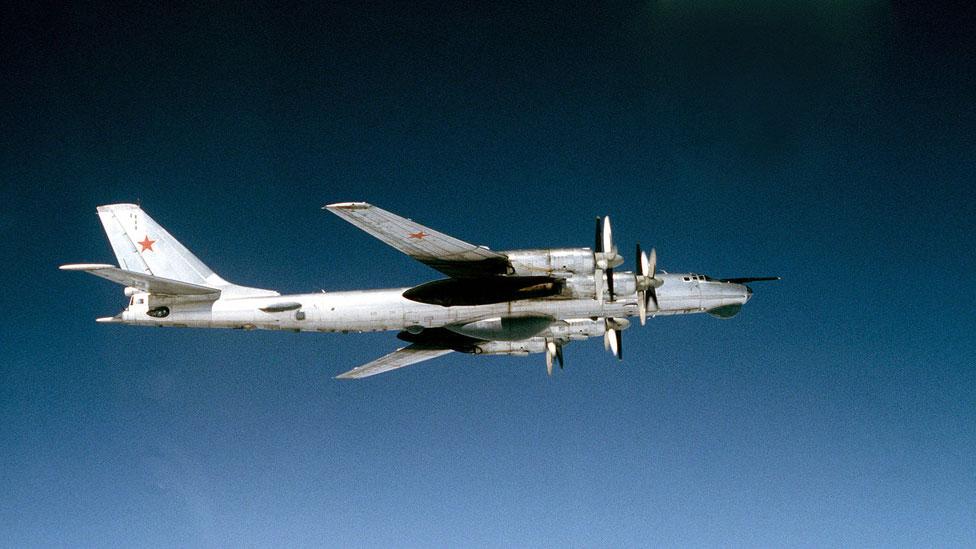The Tupolev Tu-95 first thundered over Soviet parades in the mid-1950s. Why does this giant, propeller-driven bomber still make headlines nearly 60 years later? Stephen Dowling investigates.
It first rumbled into the skies back in the early 1950s, an aerial giant that epitomised Soviet military might. Even its codename – ‘Bear’ – underlined its great size and strength.
When the Tupolev Tu-95 first appeared in front of Western observers in 1956, it did so amid a revolutionary surge in aviation design; the decade after the end of World War II saw jet technology become ascendant. Yet the Bear had propeller-driven engines, which even then seemed archaic.
Few would have believed it would still be on the front-line nearly 60 years later, serving as a strategic bomber, maritime patrol aircraft – and the world’s noisiest spy plane.
Last week, the Bear appeared in various British news outlets as two of them were escorted off the UK coast by RAF fighters. It was a traditional, routine patrol for Bears during the height of the Cold War – a routine Russia has recently reinstated. Yet the story of why the Russian Air Force continues to rely on this machine nearly 60 years later is more interesting than the sensationalist headlines.
The Bear has remained in service, partly, because of its visionary creator. Andrei Tupolev was the leading designer of large aircraft in the USSR, a gifted engineer who had been imprisoned during the height of Josef Stalin's purges in the 1930s on trumped-up charges. As World War II gave way to a Cold War between the US and the Soviet Union, Tupolev helped create the country's first nuclear-capable bomber, the Tu-4 'Bull'. It was a reverse-engineered copy of the Boeing B-29 Superfortress, the aircraft that had dropped the atom bombs on Japan. During the US bombing campaign against Japan towards the end of the war, several of these advanced bombers had crash-landed on Soviet territory.
The Tu-4 gave the Soviet Air Force its first nuclear bomber, but had too short a range to reach the US from Soviet bases. In 1952 Tupolev and rival design bureau Myasishchev were asked to design a bomber that could carry a bomb load of 11 tonnes 8,000km – far enough to fly to the heart of the US. Myasishchev chose to build a four-engined jet bomber, the M-4 ‘Bison’, that stretched Soviet technical ability to the very limits. Tupolev, instead, decided to mix tried-and-trusted techniques with design features borrowed by the first generation of jets. It turned out to be a masterstroke.
"It took a conservative approach to the development of a long-range bomber,” says Douglas Barrie, an aviation analyst at the International institute for Strategic Studies (IISS), "and was seen as a less risky approach than the Myasishchev M-4 Bison.”
Booming engines
The Tu-95 is an enormous aircraft – it measures 151 feet (46m) from tip-to-tail and has a wingspan of 164 feet (50m). Empty it weighs 90 tonnes and is powered by four enormous turboprop engines, a form of gas turbine whose power drives propellers rather than being thrust out the back. The Bear has eight sets of propellers; all that power is enough to give it a top speed of well over 800km/h (500mph), nearly as fast as a modern airliner. Tupolev rightly predicted that early jet engine technology couldn't meet the requirements; the Myasishchev design was a resounding failure. Unlike most propeller-driven planes, the Tu-95's wings were sharply swept back by 35 degrees, much like those of early jet fighters. This helped the aircraft limit drag and reach such high speeds.
(BBC)
ANN.Az
Follow us !











